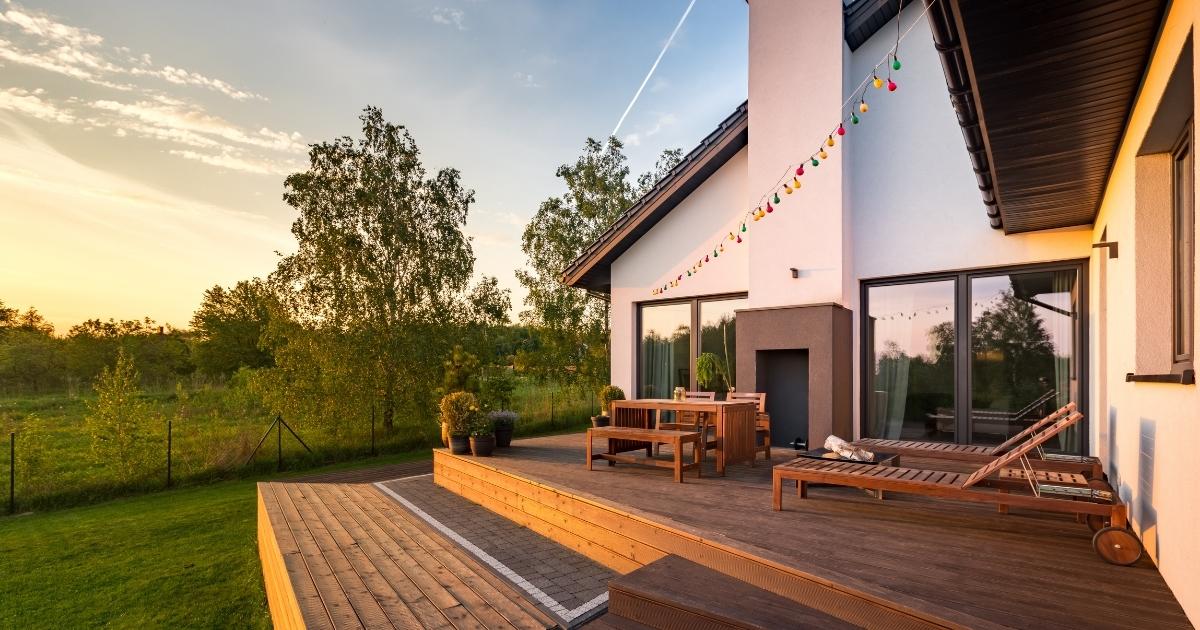1. You don’t inherit someone else’s mistakes
This is the biggest pro in our eyes! The difficulty of purchasing an existing property is there can be a lot of hidden surprises, cut corners, or quick fixes that won’t stand the test of time. Sometimes that includes very expensive mistakes like infrastructure, plumbing, or electrical issues that weren’t caught during the home inspection.
Although custom homes seem like an expensive endeavour, renovations can add up quickly too. If you want to completely restructure an old home, prepare to have very flexible plans because, chances are, you’ll uncover issues that need your immediate attention.
You’ll also have to be the problem-solver if you’re looking to extensively renovate, that means reimagining the layout within the existing structural limitations. If this is feeling a bit daunting, reach out to a design firm (like ours) and they can restructure your space through custom, code-compliant blueprints.
2. Get exactly what you want
The most fun part of custom homes is getting exactly what you want. Maybe it gives you the freedom to get that view you really want, or the privacy from neighbours, or perhaps custom building means you can secure a much larger lot size.
Do you want 5 bathrooms and a huge mudroom? You’ve got it. Have you always dreamed of an east-facing bedroom so you can watch the sunrise? If you know you want it, you can make it a priority in your home design.
Plus, instead of inheriting a previous owners’ decorating choices, you can pick all those hard-to-change colours to match, from the flooring to the kitchen countertops.
With custom building, you really have the freedom to get exactly what you want. Keep in mind there are a few key things to look out for when buying land for your custom build to ensure you can build exactly what you want without running into zoning restrictions.

3. Don’t compete in a seller’s market
It’s no secret that the real estate market has become incredibly competitive over the last year. But the market for vacant land isn’t nearly as vicious.
Most likely, you won’t get caught in a bidding war for land right now – and you won’t end up significantly overpaying just to get your bid noticed. Many buyers are overpaying to get their hands on a home then having little to no renovation budget left over.
If you don’t mind buying (usually) a little bit out of the city centre, a vacant lot to build a custom home on could be a much better investment than buying an existing home in a seller’s market.
4. Energy efficiency
Building from scratch means you can leverage the latest in energy efficient heating, cooling, electrical, and plumbing technology – whether that’s just high-quality windows and insulation, or solar-panels, geothermal, and rainwater collection.
Even if you’re not environmentally passionate, there’s still a huge economic benefit to making your home as energy efficient as possible. You could save thousands over the home’s lifetime by making your home more sustainable, or simply better at maintaining temperature.
With an existing home, you can replace windows and seal up cracks, but you won’t ever be able to meet the energy efficiency standard of a new home due to advancements in materials and building practices. Let’s be honest, you’re never going to peel off the exterior limestone to install continuous insulation – plus that’s going to strip the home of the character you bought it for.

5. Aging in Place
Looking to the future, if you’re trying to settle in your forever home, custom building allows you to prepare for aging in place.
You can size your doorways (widening them) to improve accessibility, reinforce walls for the future installation of grab bars, or create an in-law suite if you plan on taking in elderly parents, a caregiver, or for rental income to cover living costs.
Although it’s not as fun to think about as that huge mudroom you have on your wish list, custom building with aging in mind is incredibly practical – and will save you time, money, and stress down the line.





